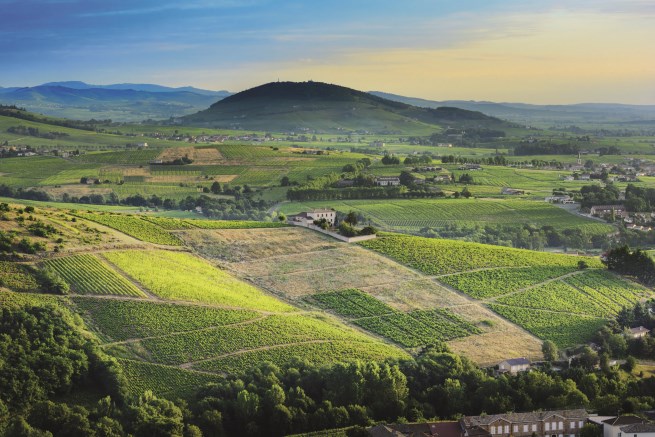A Complete Guide to Burgundy: Venture Beyond the Vineyards
Though famed for its incomparable vintages and world-class gastronomy, there is more to Burgundy than food and wine as Sylvia Edwards Davis discovers…
Burgundy is perhaps best known for its excellent gastronomy and world-class wines, but it also has an abundance of beautiful landscapes, historic landmarks and cultural attractions. As such, it’s a region worth visiting time and time again. Let’s begin our tour of the ‘Best of Burgundy’ in its charming capital, Dijon.
At the intersection of the north-south and east-west axes of Europe, Dijon is an accessible and surprisingly active city that has managed the rare feat of modernising its historical centre without sacrificing its heritage. With more than 250,000 inhabitants – if you include the surrounding countryside and suburbs – Dijon officially became one of the major French métropoles in February.
The frequent high-speed train links that connect it to Paris in just 1 hour 40 minutes and Marseille in three hours, its superb cultural offering, the beauty of its historic centre, the presence of a multidisciplinary university, the quality of the local cuisine, all reinforce the gravitas of the capital of the new Bourgogne Franche-Comté super-region. The future is golden, both economically and touristically.
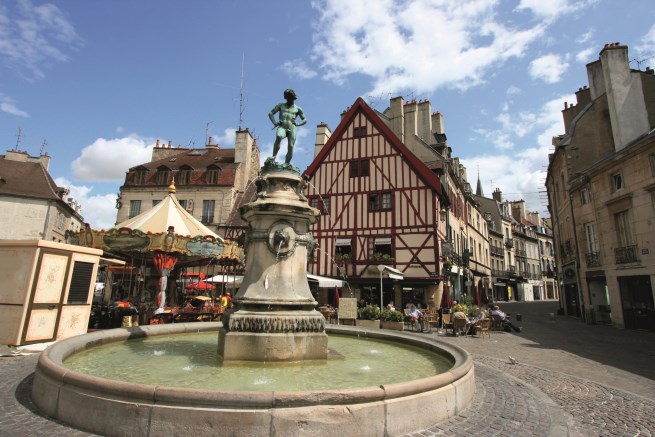
Burgundy’s capital city, Dijon.
In 2019, Dijon will welcome the Cité Internationale de la Gastronomie et du Vin, an exciting new hub for exhibitions, restaurants, training; and generally having a great time. It’s no surprise that the city was chosen as the site of this new gourmet centre, as it’s long been considered a Mecca for foodies.
Scrummy fare aside, it’s also packed with history and a great way to take it all in is to follow the walking trail marked by little owls on bronze pavers. There’s a handy companion app that tells you the story behind each of the 22 points of interest. The whole loop can be covered easily in just two hours.
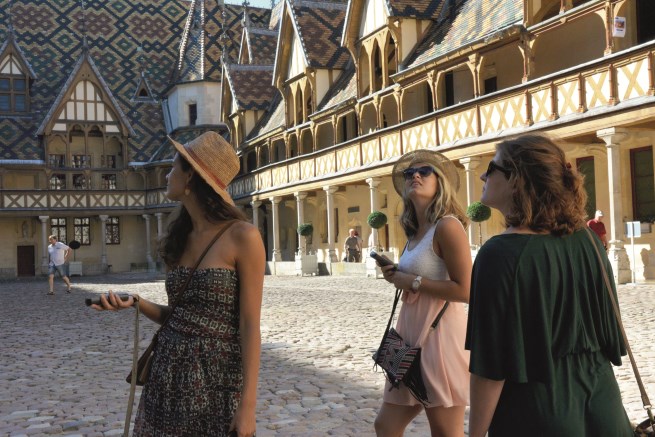
Les Hospices de Baune, photo: Côte-d’Or Tourisme © R. KREBEL
The Dukes of Burgundy
Half-timbered homes, charming shops and magnificent religious temples all tell the rich history of the seat of the mighty Dukes of Burgundy, whose realm once extended far north through what is now Luxembourg, Belgium and the Netherlands.
The dukes spared no expense to impress their subjects and guests through art and architecture, bringing only the best artists, engineers and craftsmen – and leaving a rich legacy that we can enjoy to this day. The fine arts museum, for example, is nothing short of spectacular. Set in the Palace of the Dukes, it houses entire sections dedicated to medieval art, Renaissance collections, 20th-century history and even contemporary works. Don’t miss the Hall of the Tombs of the Dukes of Burgundy and look closely at the base to spot the striking ‘Mourner’ marble figurines.
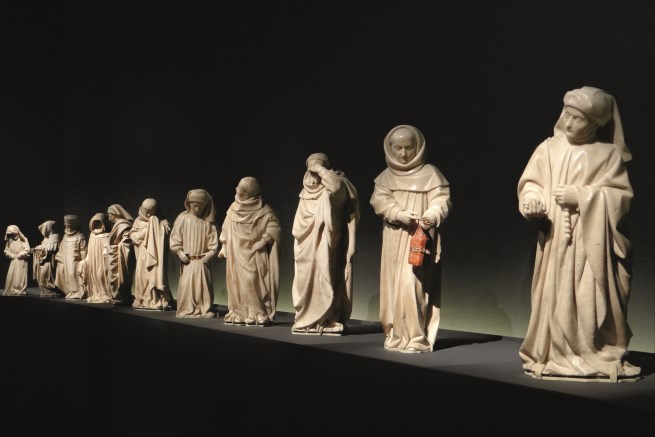
The mourners, photo: jean-pierre dalbera
For a breathtaking bird’s-eye view of the city, climb up the 316 steps to the top of Philippe Le Bon’s tower. The nearby Église Notre-Dame is like no other Gothic building of its time. It was erected in the 13th century and is home to two of the emblematic symbols of Dijon: the little owl carving on one of its angles, which has been seriously manhandled as it’s said to bring good luck if you rub it with your left hand; and the bellringing automatons on top of the belfry. The façade is decorated with dozens of grotesques, each with its own distinct personality.
Wandering through the pedestrianised medieval centre is not just a history lesson but also a chance to shop till you drop. Exclusive brand names are well represented, as well as chic boutiques – and of course it wouldn’t be a visit to Dijon without a stop at Maille to pick up a jar of its famous gourmet mustard. Take your time, stop frequently for a coffee or to sample the local Kir – a glass of white Aligoté wine with a splash of Crème de Cassis liqueur. In Dijon you’ll find the delicious blackcurrant celebrated in everything from ice cream to pastries and jams. Insider tip: take home a bottle of Crème de Cassis ‘Noir de Bourgogne’ at L’Héritier-Guyot. It’s far superior to the supermarket variety. Trust us.
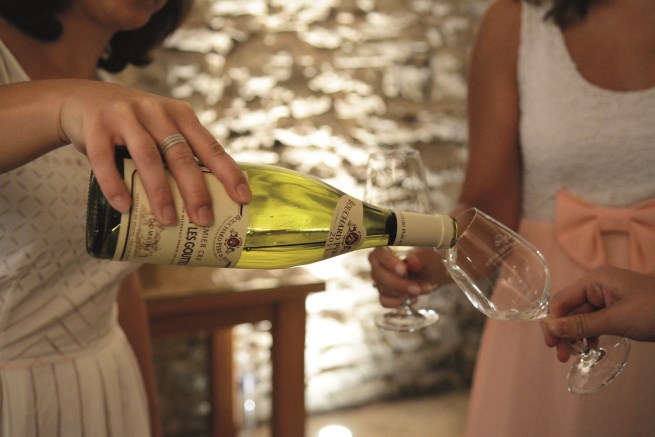
La Maison Bouchard Père et Fils. photo: Côte-dOr-Tourisme-©-R.-KREBEL
A Trendy Spot
Just a short stroll from the cathedral and museum, you’ll have your pick of wine bars and romantic restaurants. Not least Dr. Wine, a trendy spot near the market with an amazing selection of bottles you can order by the glass and share with friends along with a board of local charcuterie.
Don’t let its medieval façade fool you; Dijon has a young and lively modern art scene. Le Consortium holds powerful exhibitions, considered to be among the best in France. This is a contemporary art centre with a collection of more than 250 works by international artists – many of them acquired at the earlier stages of their careers – which are regularly loaned to some of the world’s most important and highly-regarded art galleries.
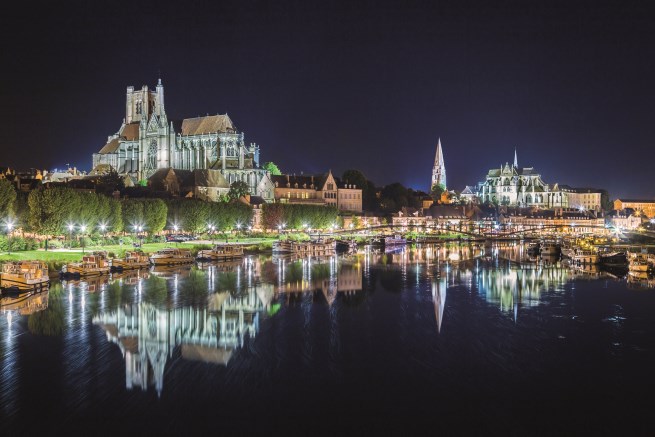
Auxerre’s Saint-Étienne Cathedral
Auxerre Through History
The Cathédrale Saint-Étienne, at the apex of the city, is hard to miss. Most of the Gothic edifice was built in the 13th century, on the site of an 11th-century Romanesque church. A conspicuous beacon of religious and political power, it was the scene of crucial events felt far beyond Auxerre’s walls.
In 1359, in the midst of the Hundred Years War, the city fell into English hands. Pillaging and spoliation ensued, and building work on the magnificent Gothic temple was disrupted until 1412, when the Peace of Auxerre was signed at the cathedral between the Armagnacs – supporters of the King of France – and the mighty Burgundians. And it was there that a devout Jeanne d’Arc stopped in February 1429 to hear Mass, on her way to meet Charles VII.
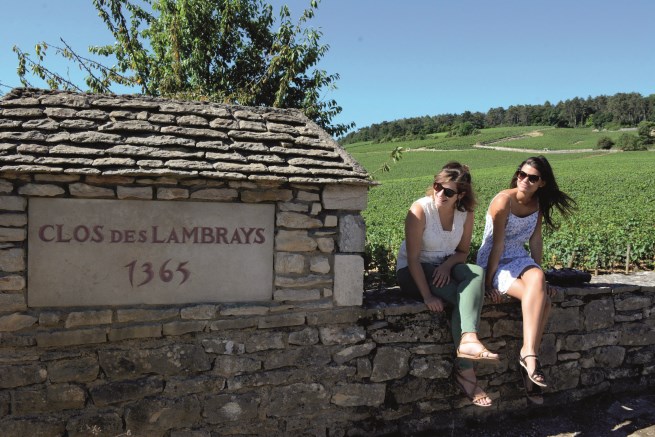
Grand Cru Clos des Lambrays.
Of the original 11th-century Romanesque church, only the imposing crypt remains, and at its heart is the rarest of treasures. Painted in the ochre of the surrounding country is a jaw-dropping fresco; the only known depiction of Christ riding a horse. In this remarkable tableau, Jesus is portrayed on horseback, holding a sceptre in his right hand and raising his left in benediction.
“Burgundy is about farmers who grow grapes and work their arcane alchemy to turn them into wine.”
The crypt is open to visitors from April to November, and in winter, but only to groups – at least, officially… Rumour has it if you ask the people manning the gift shop nicely they may give you out-of-season access. (Remember, you didn’t hear it from us!)
Glorious Wine
If you can’t make more, make it better: such is the mantra of Burgundy winemakers, whose vintages are considered to be the very best money can buy. The wines of Burgundy are produced in relatively small quantities and are directly influenced by their terroir.
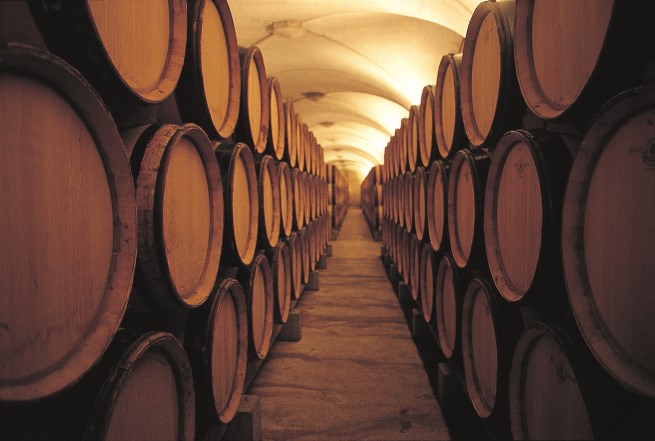
It was at the request of the citizens of Dijon, Beaune and Chalon-sur-Saône that Philip the Bold prohibited, in 1395, the “very bad and disloyal plant called Gamay”. So today Pinot Noir and Chardonnay varieties make up 80 per cent of the region’s vineyards, with only a few parcels of land left over for Gamay and Aligoté. As a result, when you sip a Burgundy, you are tasting the nuanced peculiarities of the soil, sun exposure, rain pattern, vigneron know-how and weather, in that particular parcel of land, on that particular year, made by those particular hands.
Unlike in Bordeaux, where (some would cruelly suggest) wines are all about grands châteaux and sleek marketing, Burgundy is about farmers who just happen to grow grapes and work their arcane alchemy to turn them into wine. When you visit a winery in Burgundy, your handshake is likely to be met by a weathered hand, with traces of topsoil under the fingernails.

There are five distinct wine sub-regions in Burgundy, each a little different from the rest. From north to south they are: Chablis, Côte d’Or (incorporating Côte de Nuits and the Côte de Beaune), Côte Chalonnaise, Mâconnais and – the one that still struggles to be taken seriously – Beaujolais. The most internationally recognisable names are located on the Route des Grands Crus. The iconic wine route, which stretches from Dijon to Beaune, is celebrating its 80th anniversary this year. If reading names like AloxeCorton, Richebourg, Pommard, Nuits-Saint-Georges, Gevrey-Chambertin, Meursault, Puligny-Montrachet and Romanée-Conti makes your mouth water, then this is your Yellow Brick Road.
The wine route can be covered by all manners of transport: by car, bike – particularly the Véloroute between Beaune and Santenay – on horseback, by hot-air balloon or on foot, with 150km of dedicated footpaths. The intricate know-how and designation system of these wine micro-terroirs, known as climats (a word that originally derives from the Greek for ‘slope’), harks back to the medieval monks who first kept detailed records of the pedigree of each of these parcels; some of which are no bigger than a football pitch. Les Climats de Bourgogne, like Dijon’s historic centre, have been awarded designated UNESCO World Heritage Site status. The itinerary is clearly marked and the distances between stops are manageable – the hills aren’t too taxing for any reasonably fit cyclist. The website of the Burgundy Tourist Office details the sites bearing the De Vignes en Caves label, inviting visitors to venture into the cellars of 330 producers from Chablis to Mâcon.
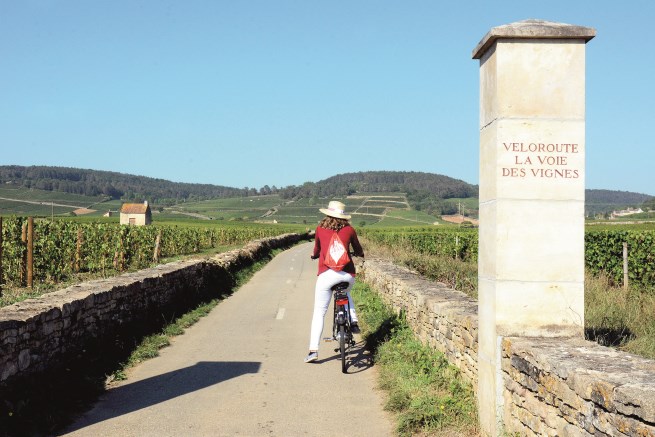
A cycle path through the vines.
Bonnie Beaune
Beaune should feature on any worthy traveller’s itinerary. And calling in at the Hôtel-Dieu is a must. The former almshouse is the main site of the celebrated Hospices de Beaune – founded in 1443 by Nicolas Rolin, chancellor to the Duke of Bourgogne – and where the renowned candlelit wine auction takes place each year. We’re talking serious figures here. Based on average prices taken over several years, the Wine Searcher ranking lists a Romanée-Conti Grand Cru as the number one most expensive wine in the world at US$14,531 per bottle. And that’s not even retail. Five of the six most expensive wines on the list are on the Route des Grand Crus.
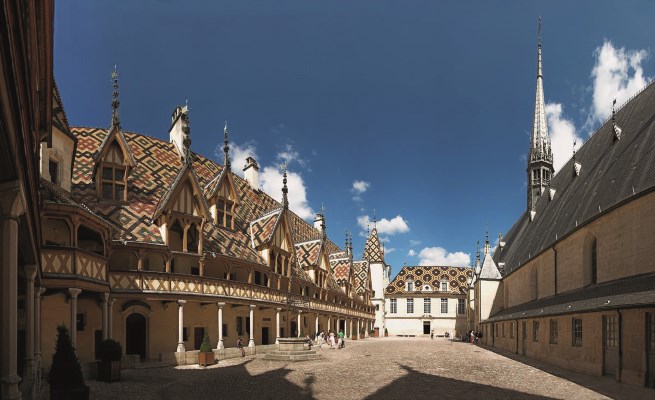
Hospice Beaune ©smallcoho
The Hospices de Beaune is also home to an icon of art history: the striking Altarpiece of the Last Judgement. In 1452, Rolin and his third wife, the remarkably devout Guigone de Salins, commissioned Flemish painter Rogier van der Weyden to create a strong statement piece for the chapel, where those seeking refuge could stop to pray and find respite from their suffering.
Beyond The Vines
There is so much more to Burgundy than its famous wines. The region is packed with quirky landmarks and arresting landscapes worth a stop and linger: the cliffs of Saint-Romain, near Meursault, or the Comblanchien quarries near Nuits-Saint-Georges are just a few of the delights at your fingertips. Nuits-Saint-Georges’s intriguingly-named Imaginarium runs fun and informative exhibits lifting the veil on wine production. The rookie-friendly introduction to the wonder that is the Crémant de Bourgogne, a cousin of champagne, is worth the visit alone.
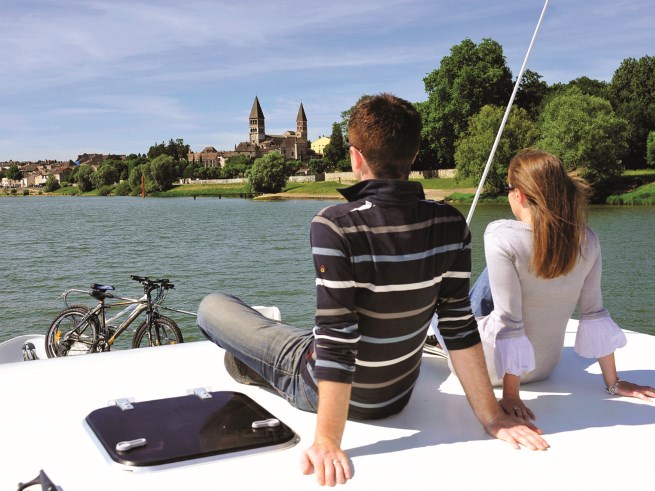
Photo: Alain Doire Bourgogne Tourisme
Why not veer off the beaten track and explore the Morvan Regional Nature Park? This protected area boasts stunning lakes and forests and is speckled with charming villages and imposing châteaux. Best of all, it feels unspoilt and still relatively uncharted. The Morvan is perfect for families, outdoorsy types and those who wish to take a deep breath and completely unplug, cocooned in nature. Another dreamy way to visit the region is by gliding gently along the canals, whether on a hotel barge or aboard your own self-drive watercraft. The Canal de Bourgogne connects the Yonne and Saône rivers, covering 242 km. The beautiful waterway offers an absolutely spectacular and relaxing route between the Seine and the Mediterranean. Whatever your destination, Burgundy is ripe for the taking.
Share to: Facebook Twitter LinkedIn Email
Leave a reply
Your email address will not be published. Required fields are marked *

